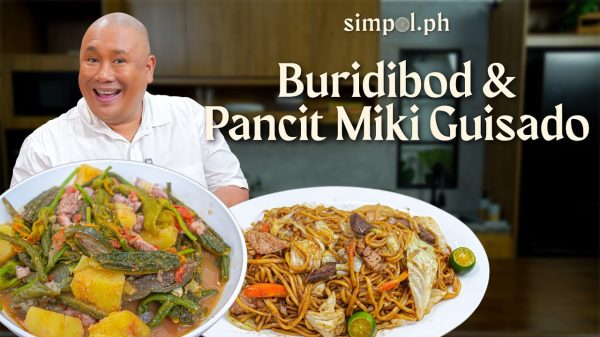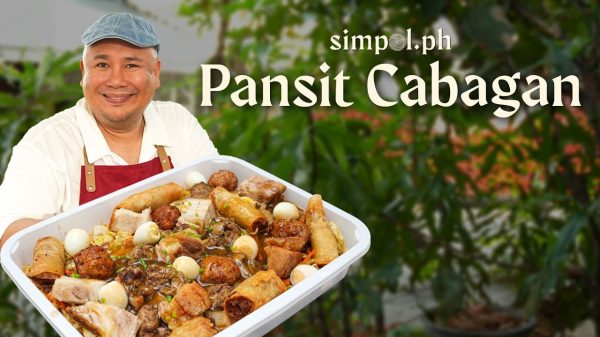On an ordinary morning in Manila, a taxi driver steps into Tinapayan Festival bakery on Dapitan Street. The air smells of freshly baked bread—warm, yeasty, comforting. He picks up a single premium loaf, golden and soft, and hurries home to share it with his children from Tinapayan Festival.
For founder Lucito “Chito” B. Chavez, moments like this capture what bread means to Filipinos at Tinapayan Festival bakery.
“It’s not just food,” he says. “It’s joy shared. Bread is a part of our celebrations, big or small.”
For more than forty years, Tinapayan Festival bakery has been part of those joys. Its soft buns, rich ensaymadas, and festive cakes have appeared at birthdays, anniversaries, and even wakes. Students once stopped here for snacks on their way to class. Today, those same students return as professionals with their children, reliving the taste of their youth. Tinapayan Festival bakery embodies these cherished moments for many.
This is more than a bakery. It is a living story of Filipino bread culture. And it begins in Cuenca, Batangas—known as the “Home of the Bakers.”

From Cuenca to Dapitan
In Cuenca, bread is more than a livelihood. It is identity. For decades, bakers from this small town carried their craft to Metro Manila and beyond. They helped shape the bread culture Filipinos know today.
Chavez grew up surrounded by this tradition. “I was inspired by my kababayans,” he recalls. “Many from Cuenca became successful bakers here and abroad. Some gave me recipes, others became friends. They pushed me to try.”
In 1982, fate gave him the chance. A property in Sampaloc—once a bakery—was up for sale. Chavez bought it, left behind his gasoline station and poultry farm, and opened Tinapayan Festival. With him, he carried the spirit of Cuenca.

Mr. Pinoy Pandesal
From the start, Chavez had a clear vision: bread that is proudly Filipino. Made by Filipino hands. Using local ingredients. For Filipino tables.
During the flour shortages of the 1980s, this vision was tested. Chavez turned to local crops—squash, camote, malunggay, carrots, and ube. These became the first of what he called “agri-breads.”
In the 2000s, as spokesperson of the Philippine Federation of Bakers Association, he promoted these breads nationwide. “True enough, malunggay pandesal became popular, and during the pandemic, the ube-cheese pandesal was everywhere,” he says with a smile.
The advocacy earned him the nickname “Mr. Pinoy Pandesal.” For Chavez, pandesal is more than a roll. It is the bread that best represents Filipinos—adaptable, abundant, and rooted in community.
“The true bread of the Filipino should reach the world. Where there is a Filipino, there is Tinapayan.”
Bread and Memory
Step inside Tinapayan Festival bakery today and you’ll find more than 200 products. Soft buns. Fiesta cakes. Flavored loaves. Yet for Chavez, the products are not the point. What matters is how bread becomes part of people’s lives.
“Filipinos celebrate with bread, no matter how simple or grand the occasion,” he says. “Over the decades, we’ve seen customers grow with us. Students from the university belt became professionals, yet they return for the same breads they loved.”
Ensaymadas updated for younger palates still carry recipes from the 1960s. Pandesal anchors mornings. Cakes mark milestones. Loaves bring comfort and care. In joy and in grief, bread always has a place at the Filipino table.
“Bread holds our stories—it’s there in celebrations, struggles, and everything in between.”

A Bakery with a Mission
For Chavez, bread-making has never been just a business. “We have a role to play in society—feeding the hungry,” he says.
That belief has guided Tinapayan for decades. The bakery has donated bread during typhoons, floods, and volcanic eruptions. During the pandemic, it fed frontliners.
Inside the bakery, values remain central. “Tinapayan is for family. We treat everyone like family. We are maka-Pilipino, serving the community. And above all, maka-Diyos—we serve God by serving our clients from the heart.”
“Tinapayan is more than bread. It’s family, faith, and community baked fresh every day.”
Looking Ahead
Chavez’s three children are now part of the business. The family recently opened a branch at SM North EDSA, bringing Tinapayan Festival bakery closer to new neighborhoods.
At the same time, Chavez keeps innovating. “I’m still excited about expanding agri-breads,” he says. “It lessens our dependence on imported flour and creates healthier, uniquely Filipino breads.”
His son Pot, now representing the second generation, sees it as both inheritance and duty. “It’s about a natural love for the industry,” he says. “We take pride in being Filipino and want to share that without borders.”
Bread, Heritage, and Identity
What began as one man’s pivot from gasoline and poultry to bread has become a festival of flavors and memories at Tinapayan Festival bakery. Rooted in Cuenca’s heritage. Nurtured in Dapitan’s ovens. Baked into the lives of countless Filipinos.
“Success is not my dream for myself,” Chavez says softly. “It’s my dream for others, where my vision becomes a reality that benefits many.”
And like that cab driver hurrying home with a warm loaf under his arm, Tinapayan Festival bakery reminds us that bread is never just bread in the Philippines. It is heritage. It is culture. It is identity. And as long as there are Filipinos—whether in Manila, Batangas, or abroad—there will be Tinapayan.
Discover more stories behind the fire and the legacy, read more:
From Father’s Kitchen to Culinary Cup: The Chefs Behind Marriott Manila’s Winning Streak
What It Really Takes to Become a Chef in the Philippines
Terra Madre Asia Pacific 2025: The Philippines Welcomes the World to Bacolod
























